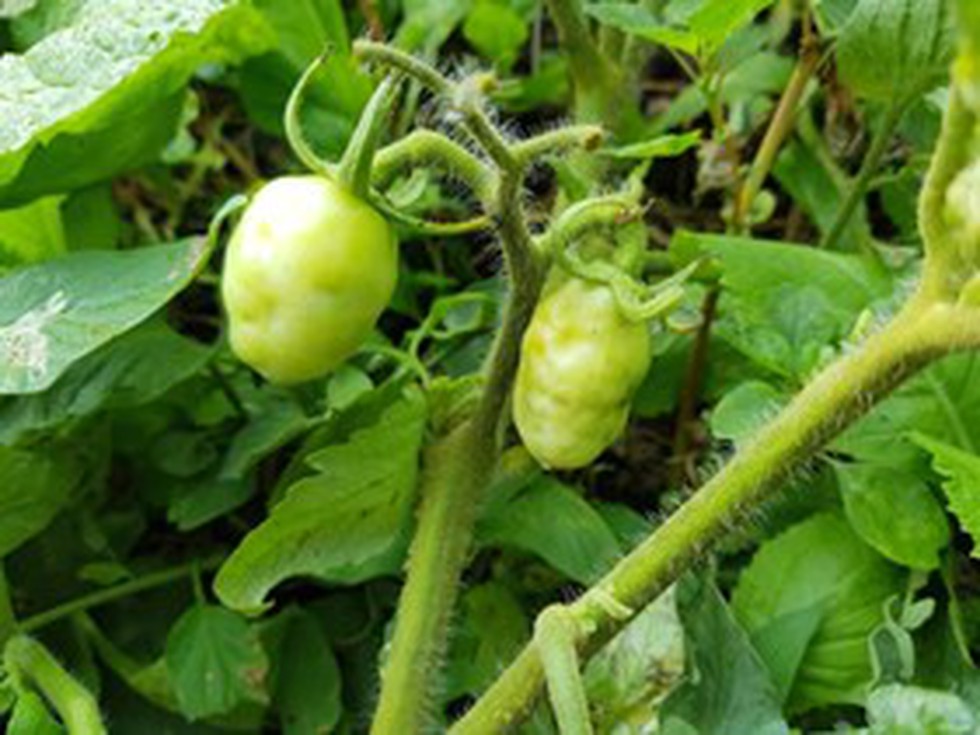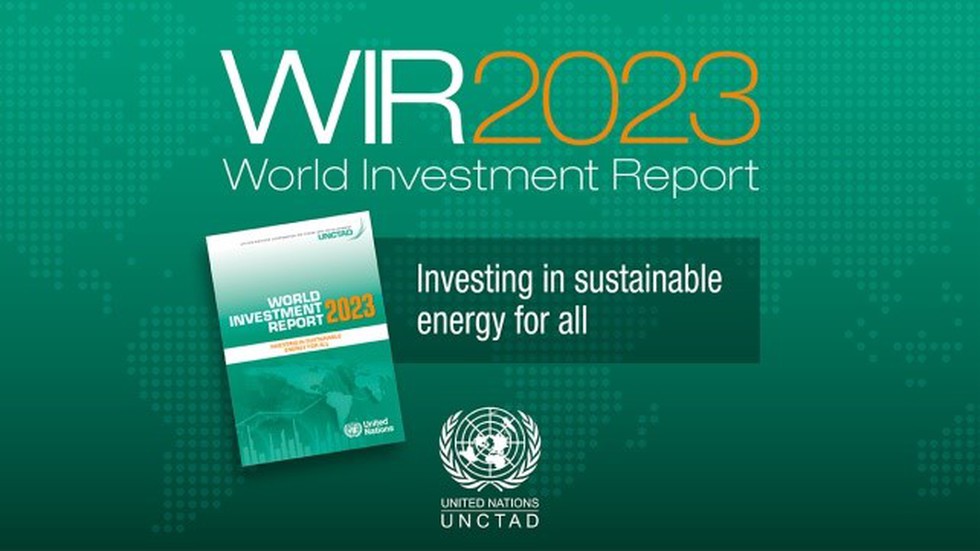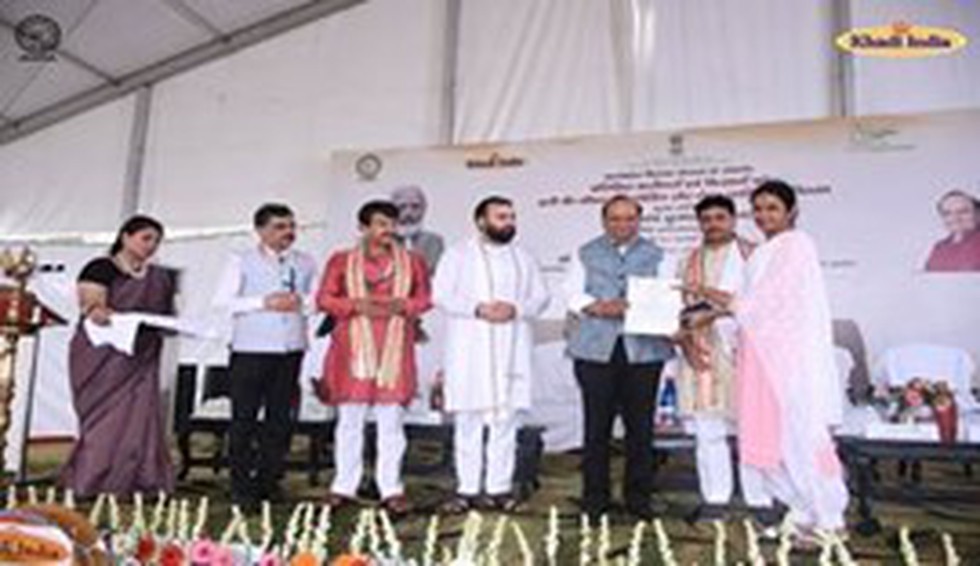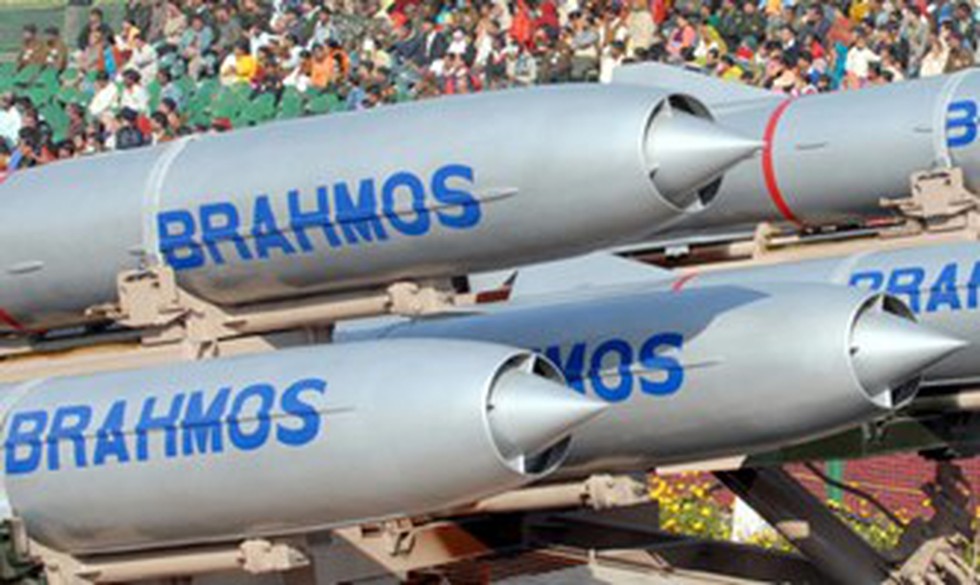
About Ambergris:
- It has long been recognized as one of nature’s most enigmatic phenomena.
- Ambergris which means grey amber in French, is a waxy substance that originates from the digestive system of protected sperm whales.
- The freshly passed ambergris is a light yellowish substance.
- Chemically, ambergris contains alkaloids, acids, and a specific compound called ambreine, which is similar to cholesterol.
- It is a rare substance, which contributes to its high demand and high price in the international market.
- It is used
- To produce perfumes which have notes of musk.
- While there are records of it being used to flavour food, alcoholic beverages and tobacco in some cultures in the past.
- There is a ban on the possession and trade of ambergris in countries like the USA, Australia and India.
Key facts about Sperm Whale
- Sperm whales are the largest of the toothed whales and have one of the widest global distributions of any marine mammal species.
- Appearance
- It is dark blue-Gray or brownish, with white patches on the belly.
- It is thickset and has small paddle like flippers and a series of rounded humps on its back.
- Habitat: It is found in temperate and tropical waters throughout the world.
- Conservation status
- IUCN: Vulnerable
- CITES: Appendix I
- Wildlife (Protection) Act, 1972: schedule 2

Why in news?
- Tomato crop in Maharashtra was impacted by attacks of the cucumber mosaic virus (CMV), while in Karnataka and other South Indian states the farmers blaming tomato mosaic virus (ToMV) for crop losses.
What is Mosaic virus?
- It is a parasite that destroys plants, gardens, and crops down to their molecular level.
- Once a plant contracts the mosaic virus, the infected plant can then spread the virus to other plants and even affect an entire harvest if left untreated.
- It affects a wide variety of horticultural and vegetable crops — roses, beans, tobacco, tomatoes, potatoes, cucumbers, pumpkins, squash, melons, and peppers.
What is ToMV?
- It belongs to the Virgaviridae family and is closely related to the tobacco mosaic virus (TMV).
- It hosts include tomato, tobacco, peppers, and certain ornamental plants.
- It spreads mainly through infected seeds, saplings, agricultural tools.
- It would require only a few infected saplings for the virus to take over an entire field in a matter of days.
- It can remain dormant in weeds and plant remains around the field, and come back later.
What is CMV?
- It has a much larger host pool that includes cucumber, melon, eggplant, tomato, carrot, lettuce etc.
- It was identified in cucumber in 1934, which gave the virus its name.
- It is spread by aphids which are sap-sucking insects.
- It can also spread through human touch, but the chances of that are extremely low.
- Conditions of high temperature followed by intermittent rain, which allow aphids to multiply, are conducive to the spread of CMV.

Key findings:
- India and ASEAN were the most buoyant recipients of the Foreign direct investment (FDI), with increases of 10 and 5%, respectively.
- FDI inflows were higher in developing countries compared with those in developed economies.
- China, the second largest FDI host country in the world, saw a 5% increase.
- FDI in the Gulf region declined, but the number of project announcements increased by two thirds.
- Inflows in many smaller developing countries were stagnant, and FDI to the least developed countries (LDCs) declined.
- Much of the growth in international investment in renewable energy has been concentrated in developed countries.
- The investment gap across all sectors of the Sustainable Development Goals has increased to more than $4 trillion per year from $2.5 trillion in 2015.
- The largest gaps are in energy, water and transport infrastructure.
Key facts about the United Nations Conference on Trade and Development
- It is a permanent inter-governmental body established by the United Nations General Assembly in 1964.
- It is responsible for dealing with development issues, particularly international trade.
- Framing policies in various domains such as trade, technology, finance, aid, and transport are the most important priorities of UNCTAD.
- The Conference ordinarily meets once in four years.
- The second UNCTAD Conference took place in New Delhi, India in 1968.
- Members: 195 countries
- Headquarters: Geneva, Switzerland
- Reports published by the UNCTAD: Trade and Development Report, The Least Developed Countries Report and Commodities and Development Report etc.

About JIMEX 2023:
- This edition marks the 11th anniversary of JIMEX, since its inception in 2012.
- This exercise will witness the participation of INS Delhi, INS Kamorta, fleet tanker INS Shakti, a submarine, maritime patrol aircraft P8I and Dornier, ship-borne helicopters and fighter aircraft.
- The exercise will be conducted over six days in two phases.
- A harbour Phase at Visakhapatnam comprising professional, sports and social interactions.
- The two navies will jointly hone their war fighting skills at sea and enhance their interoperability through complex multi-discipline operations in the surface, sub-surface and air domains.
- JIMEX 23 provides an opportunity to learn from each other's best practices and facilitates operational interactions between IN and JMSDF to foster mutual cooperation and reaffirm their shared commitment towards maritime security in the region.
What are the other Exercises between India and Japan?
- Malabar: India and Japan with the United States and Australia participate in the naval war gaming exercise named Malabar.
- SHINYUU Maitri (Air Force)
- Dharma Guardian (Military Exercise)

About Gramodyog Vikas Yojana:
- It is one of the two components of Khadi Gramodyog Vikas Yojana which aims to promote and develop the village industries through common facilities, technological modernization, training etc.
- It includes the activities carried out under different village industries.
- Components of the Yojana
- Research & Development and Product Innovation: R&D support would be given to the institutions that intend to carry product development, new innovations, design development, product diversification processes etc.
- Capacity Building: Under the Human Resource Development and Skill Training components, exclusive capacity building of staff as well as the artisans would be adequately addressed through the existing MDTCs and institutions of excellence.
- Marketing & Publicity: The V.I. institutions will be provided market support by way of preparation of product catalogue, Industry directory, market research, new marketing techniques, buyer seller meet, arranging exhibitions etc.
Key facts about KVIC
- It is a statutory body established under the Khadi and Village Industries Commission Act, of 1956.
- The KVIC is charged with the planning, promotion, organisation and implementation of programmes for the development of Khadi and other village industries in the rural areas in coordination with other agencies engaged in rural development wherever necessary.
- Nodal Ministry: Ministry of Micro, Small and Medium Enterprises.

About is Peste Des Petits Ruminants (PPR):
- PPR is a highly contagious viral disease of sheep and goats with high mortality.
- It is caused by a virus of the family paramyxoviridae and genus morbillivirus. It is closely related to other members of the genus, including the rinderpest virus, measles virus, and canine distemper virus.
- Symptoms:
- PPRV causes disease with an array of clinical signs. It also causes immunosuppression, which makes affected animals more likely to pick up other infections.
- Clinical signs of PPR: Fever, Eye and nasal discharges, Sores in the mouth, Diarrhoea, Listlessness, Respiratory signs (coughing and pneumonia), Abortion and death, with case fatality rates as high as 90% (though more commonly around 20%).
- Transmission:
- PPR is mainly spread during close contact when a susceptible animal inhales the virus from infected animals’ coughing and sneezing.
- Transmission can also occur indirectly through contact with infected objects (fomites) such as feed troughs, bedding etc.
- Sources of PPRV include secretions from the eyes, nose, and mouth of infected animals, as well as their faeces.
- Once introduced, the virus can infect up to 90 percent of an animal herd, and the disease kills anywhere from 30 to 70 percent of infected animals.
- The PPR virus does not infect humans.
- Disease prevalence:
- PPR was first described in 1942 in Côte d'Ivoire. Since then, the disease has spread to large regions in Africa, the Middle East and Asia.
- In India, the disease outbreaks have been reported in Himachal Pradesh, Andhra Pradesh, West Bengal, Telangana, Karnataka and Chhattisgarh.
- Currently, a global initiative driven by the Food and Agriculture Organization of the United Nations (FAO) and the World Organisation for Animal Health (OIE) exists to eradicate PPR by 2030.

About Sohagi Barwa Wildlife Sanctuary:
- Location: It is situated in the Maharajganj district of Uttar Pradesh.
- Borders: On the northern side, the Sanctuary shares the international boundary with Nepal, and on the eastern border is Bihar’s Valmiki Tiger Reserve.
- It was declared a Wildlife Sanctuary in June 1987.
- Drainage: It is drained by the great Gandak, the little Gandak, Pyas and Rohin rivers.
- Topography:
- It is almost flat with an average height of 100mtrs above mean sea level.
- The area gently slopes from North–West to South–East.
- Flora:
- Nearly 75% of the area consists of Sal forest, and other humid areas are covered with Jaamun, Gutal, Semal, KhairTrees, etc.
- Lower region of the sanctuary, which is water logged during rains, consists of Grasslands and patches of Cane forests.
- Fauna:
- It is inhabited by a variety of animals which mainly includes Leopard, Tiger, Jungle Cat, Small Indian Civet, Langur, Deer, Blue Bull, Wild boar, Porcupine etc.
- The Avifauna is varied with Little Cormorant, Snake Bird, Brahimini Duck, Common Teal, Little Egret, Cattle Egret, Paddy Bird etc.

About Brahmos Missile:
- It is a supersonic cruise missile.
- It is a joint venture between the Defence Research and Development Organisation (DRDO) of India and NPOM of Russia.
- It is named after the rivers Brahmaputra and Moskva.
- Features:
- It is a two-stage missile with a solid propellant engine in the first stage and a liquid ramjet in the second.
- The system has been designed with two variants for Anti-Ship and Land-Attack roles.
- Brahmos is one of the fastest cruise missiles currently operationally deployed with the speed of Mach 2.8,which is nearly 3 times more than the speed of sound.
- It has a launch weight of 2,200-3,000 kg.
- It operates on the "Fire and Forgets" principle, adopting varieties of flights on its way to the target.
- BrahMos is equipped with stealth technology designed to make it less visible to radar and other detection methods.
- It has an inertial navigation system (INS) for use against ship targets, and an INS/Global Positioning System for use against land targets.

About Strait of Hormuz:
- Strait of Hormuz, also called Strait of Ormuz is a channel linking the Persian Gulf (west) with the Gulf of Oman and the Arabian Sea.
- The strait is 35 to 60 miles (55 to 95 km) wide and separates Iran (north) from the Arabian Peninsula (south).
- It contains the islands of Qeshm (Qishm), Hormuz, and Hengām (Henjām).
- The Strait of Hormuz is the world's most important oil chokepoint because of the large volumes of oil that flow through the strait.
Key facts about Gulf of Oman:
- The Gulf of Oman or Sea of Oman, also known as the Gulf of Makran or Sea of Makran, forms the only entrance to the Persian Gulf from the Indian Ocean.
- It connects the Arabian Sea with the Strait of Hormuz, which then empties into the Persian Gulf.
- Bordering Countries: It is bordered by Pakistan and Iran in the north, by the United Arab Emirates in the west and by Oman in the south.
- The gulf is relatively shallow because of its origin as a fissure in the mountain spine now divided between Iran and Oman.
- The Gulf of Oman is about 320 km wide at its widest point between Cape al-Hadd in Oman and Gwadar Bay on the Iran-Pakistan border. It narrows to 35 miles (56 km) at the Strait of Hormuz.

About Annapurti:
- GrainATM, Annapurti, is an automated multi-commodity dispensing solution that provides fast, clean, and precise access to commodities (rice, wheat, grains) to beneficiaries, post biometric authentication.
- It is developed by World Food Programme (WFP) India.
- GrainATM ensures 24×7 access to full entitlements for people entitled to monthly subsidized grains through India’s Public Distribution System.
- Annapurti’ has potential use for food-based safety nets, food grain distribution during emergencies, and increasing market access for smallholder farmers.
- Annapurti, which dispenses the type and quantity of the selected grain (wheat, rice or millet) commodity to each beneficiary after biometric authentication, does away with the possibility of spillage, waste and short-weighing.
- Features:
- Annapurti dispenses one or two grain commodities, up to 50 kilograms, in five minutes, with an error rate of 0.01 percent.
- The entire solution, including the volume of the storage unit, is modular or easily assembled and can be put together depending on the amount of space available.
- To ensure food security with efficient energy access, the machine has been designed to consume only 0.6 Watt per hour.
- It can also be attached to solar panels, inverter batteries and elevators for automatic refilling.


.png)
.png)
.jpg)
























































































































































.png)
.png)
.png)
.png)
.png)


.png)
.png)
.png)





.png)
.png)






.png)
.png)
.png)
.png)
.png)
.png)
.png)
.png)
.png)

.png)







.png)
.png)


.png)
.png)
.png)


.png)

.png)
.png)





.jpg)

.png)
.png)


.png)

.png)
.png)
.png)

.jpg)

.jpg)


.png)

.png)
.png)
.png)
.png)
.png)
.png)
.png)
.png)
.png)
.png)




.png)

.png)





.png)
.png)
.png)
.png)
.png)
.png)
.png)
.png)
.jpg)

.png)
.png)
.png)
.png)
.png)
.png)
.png)
.png)
.png)
.png)
.png)
.png)
.png)
.png)
.png)
.png)
.png)
.png)
.png)
.png)
.png)
.png)



.png)
.png)

.jpg)
.jpg)


.jpg)
.jpg)
.jpg)
.jpg)
.jpg)

.jpg)








.jpg)
.jpg)
.jpg)
.jpg)
.jpg)

















.jpg)
.jpg)







.jpg)


















.jpg)
.jpg)






























































































.jpg)
.jpg)


























.jpg)

.jpg)










.jpg)








.jpg)




.jpg)










.jpg)


















.jpg)












































.jpg)














.jpg)
.jpg)
.jpg)





.jpg)

.jpg)
.jpg)





































































.jpg)


































.jpg)
.jpg)
















































.jpg)












.jpg)


.jpg)




.jpg)
.jpg)
.jpg)

.jpg)
.jpg)
.jpg)
.jpg)

.jpg)
.jpg)
.jpg)

.jpg)
.jpg)
.jpg)
.jpg)
.jpg)
.jpg)
.jpg)
.jpg)

.jpg)


.jpg)
.jpg)
.jpg)
.jpg)
.jpg)
.jpg)
.jpg)
.jpg)
.jpg)
.jpg)











.jpg)
.jpg)





.jpg)
.jpg)
.jpg)
























.jpg)
























.jpg)









.jpg)
.jpg)







.jpg)
.jpg)









































.jpg)
.jpg)
.jpg)
.jpg)
.jpg)

.jpg)
.jpg)
.jpg)
.jpg)
.jpg)


.jpg)
.jpg)
.jpg)
.jpg)
.jpg)

.jpg)
.jpg)
.jpg)
.jpg)
.jpg)
.jpg)
.jpg)
.jpg)
.jpg)
.jpg)
.png)

.png)
.png)

.png)
.png)
.png)
.png)


.jpg)
.jpg)

.jpg)
.jpg)
.jpg)

.png)
.png)
.png)
.png)
.png)
.png)
.png)

.png)
.png)
.png)
.png)
.png)
.png)
.png)
.png)
.png)
.png)





































































-min.png)



.png)




.png)








































